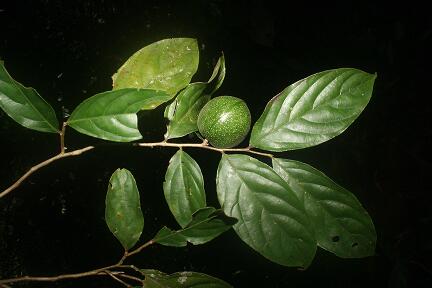Family: Flacourtiaceae

Kingdom: Plantae Rank: Family Parent: Malpighiales Status: Valid
Common Names:
- Flacourtiaceae - English, United States of America
Vegetative Morphology
Habit: Shrubs or trees.
Leaves: Leaves simple, usually alternate, rarely opposite; lamina sometimes with translucent linear puncations (especially in Casearia), glands or spines, the margins often serrulate to serrate.
Stipules: Stipules persistent or caducous leaving a conspicuous scar, rarely absent.
Reproductive Morphology
Inflorescence: Inflorescence a raceme or panicle, often in clusters, usually axillary, sometimes terminal.
Flowers: Flowers bisexual or unisexual, actinomorphic; sepals 3-5, free or fused at base into tube, sometimes petal-like; petals 3-9 or absent; stamens 5 to many, often with staminodia; nectary glands present in some genera; ovary superior, unilocular or rarely 2-locular, the style 1 or sometimes divided, the placentation parietal.
Fruit: Fruit almost always a capsule, sometimes a berry, the pericarp sometimes winged, tuberculate, or spinose.
Seeds: Seeds few to numerous, often arillate or surrounded by a fleshy pulp.
Other
Notes: Although treated here as Flacourtiaceae, this family recently segregated into Achariaceae and Salicaceae. The new treatment will be reflected in upcoming versions of this work. While some genera have tranlucent puncations on the leaves, glands or spines, this family generally lacks obvious vegetative characteristics, which makes it difficult to identify to genus when in sterile condition.